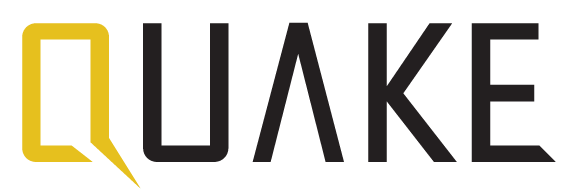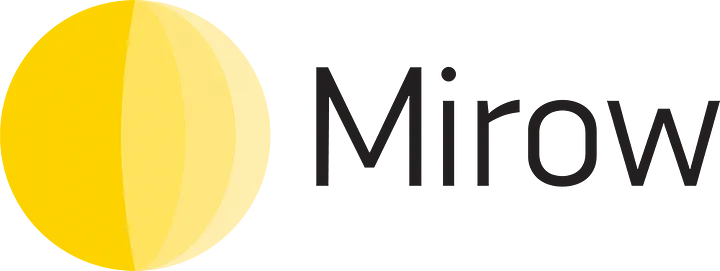The global Electronic Health Records Market size was valued at $20.55 billion in 2016 and is expected to reach $33.41 billion by 2025. COVID’s impact has expedited the importance of digital health data security, standardization, and creating a framework for a more holistic approach to healthcare.
Since Electronic Medical Records were invented by Judy Faulkner, of Epic Health, back in 1979, they have become a widely used method of storing health records in our digital world. EMR and Electronic Health Records (EHR) are critical to the future of healthcare
To date Quake has invested about 10% of our portfolio on Digital Health. We have been strategic in our healthcare investments and fortunate that these companies have done well amidst the global pandemic. One company that addresses the complexities of data in digital health head on is Open Health Network.
As Julie Yoo, who leads Andreessen Horowitz‘s investments in healthcare technology, stated, “the healthcare industry has historically required startups to work within the current system, but the pandemic is helping them get some momentum to work in more disruptive ways.” Open Health Network has done just that.
I had the pleasure of sitting down with Tatyana Kanzaveli, the CEO and Co-Founder of Open Health Network. She was celebrated in 2017 as one of the Top 10 Most Influential Women in HealthCare IT and is a well-known data scientist who speaks at conferences all over the world. We discussed COVID-19, the changing healthcare landscape, and how data is queen.
OHN Interview:
Amy: How did Open Health Network respond to the global COVID pandemic?
Tatyana: We decided to build an application using our framework that will enable people to track their symptoms, and based on the correlation between different symptoms, it predicts whether there is a high probability of having coronavirus. The app is available on the web, in iOS, Android, and available now it is available in 6 languages – we added Swahili per requests from Africa. Also this app enables patients to share data with their doctors.
It is free (covid.openhealth.cc) and has over 15k users and is being rolled out to 70k physicians. The physicians have between 200-300 patients – so the network affect is quite powerful. The small monthly fee charged to physicians (dashboard available now: constantcare.openhealth.cc) is nominal compared to the ability to monitor patients in between appointments, triage and access a dashboard in an easy-to-use format.
We decided to build an application using our framework that will enable people to track their symptoms, and based on the correlation between different symptoms, it predicts whether there is a high probability of having coronavirus. The app is available on the web, in iOS, Android, and available now in five languages. << now it is available in 6 languages – we added Swahili per requests from Africa. Also this app enables patients to share data with their doctors. >>
It is free (covid.openhealth.cc) and has over 15k users and is being rolled out to 70k physicians. The physicians have between 200-300 patients – so the network affect is quite powerful. The small monthly fee charged to physicians to use dashboard [available now: constantcare.openhealth.cc ] is nominal compared to the ability to monitor patients in between appointments, triage and access a dashboard in an easy-to-use format.
Amy: Are there any standards for how to track symptoms? How are physicians able to triage patients?
Tatyana: On the symptom tracking side, we were contacted by an independent physician network and they loved the OHN framework since it alerts to unusual symptoms of COVID and allows nurses to follow protocol, all while using the app to track symptoms and triage patients who have deteriorating health. It calculates the risk factor and then scores in three different categories, high urgency, medium, and low level. The physician’s dashboard we built then has a super advanced module that enables care coordination roles and workflows. Without it physicians have to assign nurses to do follow up calls after tele-health visits; saving time and resources.
Amy: Fascinating. Are you able to track the data to predict hot spots of the pandemic?
Tatyana: When the application gets used by thousands and thousands of people we can track the metadata with a heat map. And that map can be used to predict upcoming hotspots.
Amy: You recently published a White Paper with Mount Sinai on the framework that enables rapid development of adaptive personalized (white-labeled) digital health offerings. This was specific to IBD, but can this framework be used for other conditions?
Tatyana: Open Health Network built this framework to enable physicians and multiple specialist to adapt a care plan based on real time information. Now, the framework is super sophisticated. It has been deployed for IBD, Chrohn’s disease, cardiovascular, wellness and now COVID. IBD was the first use case and publishing this white paper enables other institutions beyond Mount Sinai to use this framework.
There are very complex AI-driven playbooks that have been created for different types of specialists. So, a physician can create a Whole Care Plan across multiple specialists available in the dashboard. It can include any type of assessments, reminders to take medications, and can be integrated into wearables like a Fitbit. So if the application reports that your heart rate for the past three days has gone up significantly, that would be a potential triage point.
The logic for escalation can be patient specific or can be generic for population types. So we basically create that logic custom based on requirements for different diseases. For instance Clinical trials for COVID can use the same type of framework.
Amy: Does OHN support all data standards from let’s say EMR/EHR platforms, such as Cerner and Epic Health?
Tatyana: Open Health Network supports all the data exchange formats. EMR systems like Cerner and Epic have ways to set up for specific health care providers. So it’s a little bit tricky. A lot of constraints are not technical but organizational, but all of them now support data exchange standards that enable us to integrate with them. We have a seamless integration with Apple Health. Apple created a variety of different partnerships where patients can pull the EMR data within apple. but the reality is that 50% of people use Android devices so anything that’s deployed for a wide population of people will have to support a variety of different devices and operating systems.
Amy: Telehealth has seen an insane increase (50 to 100X the volume) during the COVID-19 pandemic. Kaiser saw an increase in tele-health visits up from 18 percent to 80 percent at the end of April. How will this affect healthcare?
Tatyana: Top healthcare providers have to integrate tele-health as one of the pieces of continuous care. The challenge with tele-health is that you do not have a nurse at home to take all the health measurements. So patients [especially ones with complex chronic conditions] need to have Bluetooth-enabled devices at home to monitor blood pressure, oxygen levels, etc. monitor in other devices. That’s all great, but most patients do not have any of this devices at home. So it’s complex. Now there’s a way for healthcare insurance companies to cover a baseline standard set of devices that can be shipped to certain types of patients with certain conditions that are pre-integrated so it’s easy to maintain infrastructure. It may even enable virtual nursing and if so, then it becomes extremely powerful.
Amy: Finally, OHN developed a way for patients to protect their EHR data and only share data they want with physicians and healthcare providers. How have you integrated this into your platform?
Tatyana: At Open Health Network, we use smart contracts in every single application – but that is behind the scenes, so we don’t even talk about blockchain or smart contracts. When we go through security assessments with large healthcare organizations, they realize that the underlying technology secures data privacy. Smart contracts allow for only specific patient information to be shared and exchanged. Based on the requirements, we can enable patients to choose data elements based on with whom they want to exchange data. So for example, you can say, with this type of specialist I just want to share this data from this time frame. But with somebody else I want to share everything- like a family member, and it can be revocable consent. The beautiful thing is that it is customizable. We work with our client partners as advisors in a variety of different deployments and we always insist on data privacy and security, with underlying architecture of smart contracts and blockchain.
Amy: Thank you Tatyana!
In closing I would like to highlight another thought leader and investor in Digital Health, Alysa Jaffe from 7Wires Ventures. “Empowering people to make informed decisions by giving them better data about their own health could be “incredibly transformative” both for individuals and society.”


